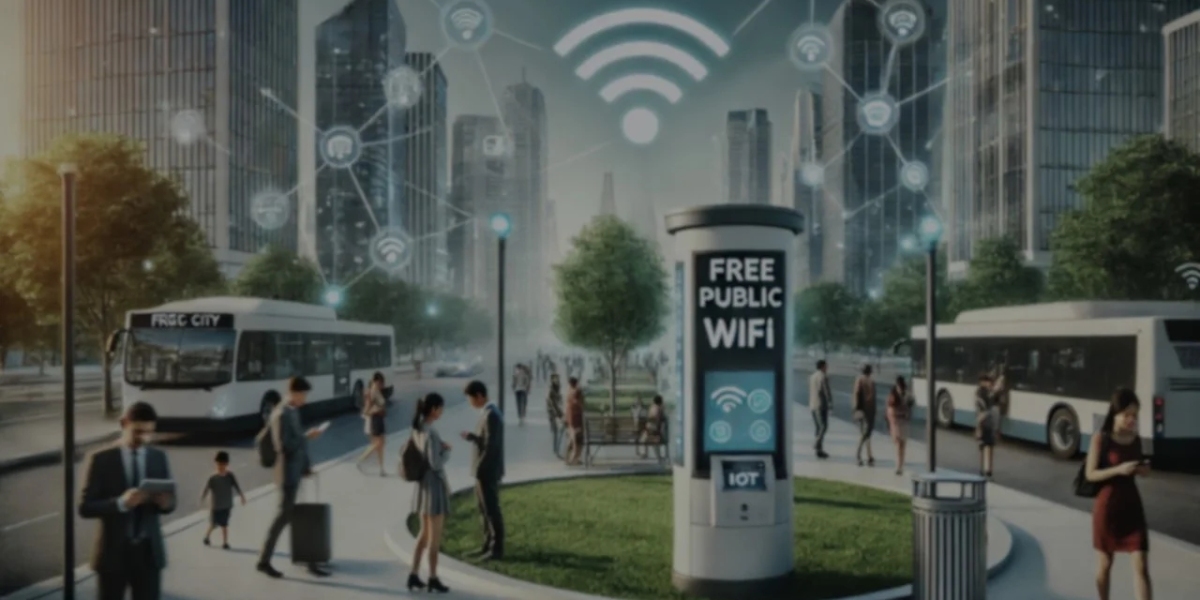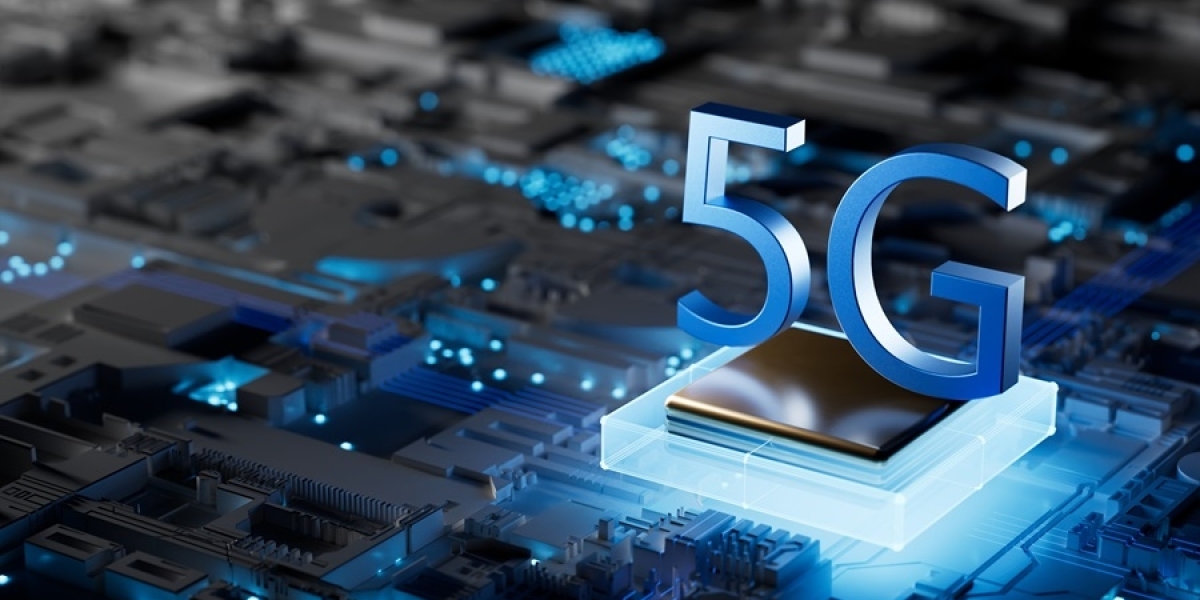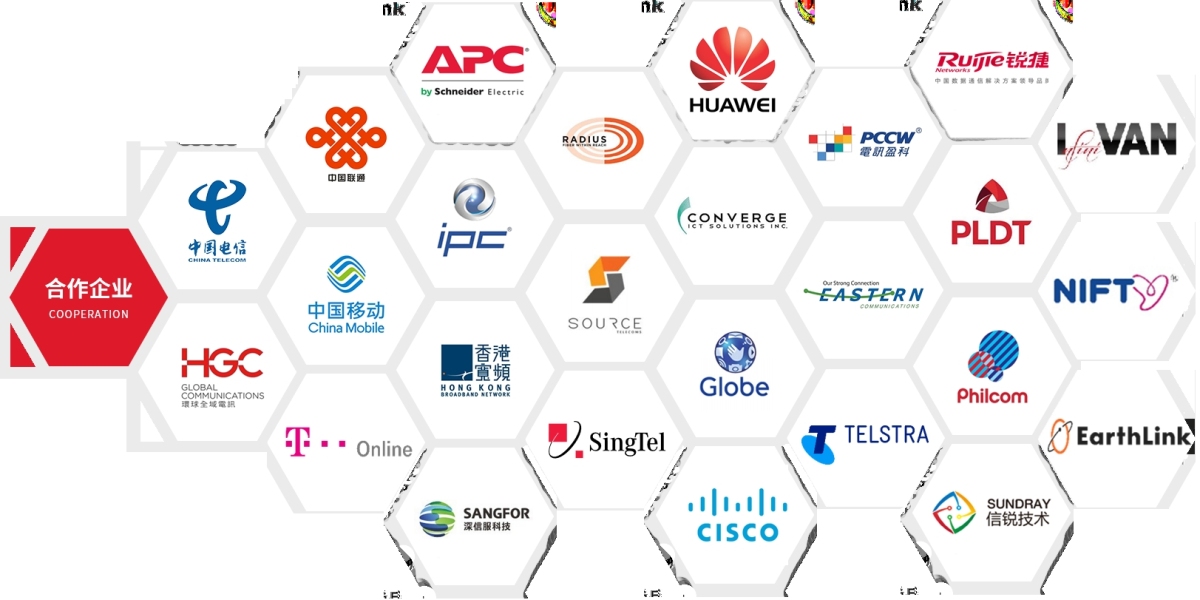Introduction: What is Smart Public Wi-Fi?
Why Public Wi-Fi Matters in Urban Development
Key Technologies Behind Smart Wi-Fi Systems
Benefits of Smart Wi-Fi for Citizens and Governments
Deployment Strategies for Cities and Developers
Challenges in Implementing Public Wi-Fi Infrastructure
Case Studies: Smart Wi-Fi in Southeast Asian Cities
Future Trends and Integration with Smart City Platforms
Frequently Asked Questions (FAQs)
1. Introduction: What is Smart Public Wi-Fi?
In today’s increasingly digital world, access to the internet is no longer a luxury — it’s a basic utility. Smart public Wi-Fi refers to wireless internet networks deployed in public spaces such as parks, plazas, transportation hubs, and government buildings. These systems go beyond simply offering free internet; they are designed to be intelligent, scalable, and secure.
Unlike traditional Wi-Fi hotspots, smart public Wi-Fi networks are integrated into broader digital infrastructure. They often include centralized management, real-time usage analytics, user authentication, bandwidth optimization, and content filtering. This transforms public connectivity into a tool for civic engagement, data collection, and economic development.
Cities around the world, especially in Southeast Asia, are investing in smart Wi-Fi as part of their smart city initiatives. Governments and private companies recognize that offering free, fast, and reliable internet access in public areas empowers citizens, promotes digital inclusion, and enhances the overall urban experience.
From barangays in the Philippines to megacities like Bangkok and Jakarta, smart public Wi-Fi is rapidly becoming a cornerstone of inclusive digital transformation. It connects people not only to the internet but also to services, opportunities, and one another.
2. Why Public Wi-Fi Matters in Urban Development
Public Wi-Fi has evolved into a critical component of modern urban infrastructure. As cities aim to become smarter, more inclusive, and more sustainable, ensuring that residents have access to reliable internet in public areas is essential for equitable growth.
1. Bridging the Digital Divide
In many developing countries, especially across Southeast Asia, a significant portion of the population still lacks home internet access. Public Wi-Fi serves as a lifeline for students, freelancers, job seekers, and low-income households — allowing them to study, work, and connect online without needing private subscriptions.
2. Enabling Smart City Services
Smart public Wi-Fi is more than a utility — it’s a platform. It supports the delivery of e-governance platforms, cashless payments, emergency alerts, and real-time transit updates. These services rely on stable and widespread connectivity to reach every citizen.
3. Driving Economic Activity
Wi-Fi-enabled zones in markets, business districts, and tourism hotspots increase foot traffic and dwell time. This translates into more customer engagement for small businesses, vendors, and service providers — fueling local economies.
4. Supporting Education and Youth Empowerment
Many students in remote barangays or urban slums rely on public Wi-Fi to access learning platforms, submit assignments, or attend virtual classes. Smart Wi-Fi enables inclusive learning environments that are accessible from public libraries, schools, and municipal buildings.
5. Improving Government Transparency and Engagement
Municipalities can use smart Wi-Fi networks to share open data, post city announcements, conduct digital surveys, and gather citizen feedback. This creates a two-way digital communication channel between citizens and their local government.
6. Increasing Public Safety and Emergency Response
Smart Wi-Fi systems often integrate with surveillance cameras and IoT sensors. In case of emergencies — such as natural disasters or security incidents — these networks help transmit real-time data to command centers and emergency services.
In short, public Wi-Fi plays a transformative role in modern urban development. It is a tool for inclusion, empowerment, and innovation — especially when designed and deployed with intelligence and foresight.
3. Key Technologies Behind Smart Wi-Fi Systems
Smart public Wi-Fi networks are built on a foundation of advanced technologies that go far beyond traditional internet hotspots. These systems combine hardware, software, and cloud-based intelligence to deliver seamless, secure, and scalable connectivity in outdoor and indoor public environments.
1. Access Points (APs) with Mesh Networking
Modern public Wi-Fi deployments use high-performance wireless access points that form a mesh network. This means each AP not only connects users to the internet but also communicates with neighboring APs to create a self-healing, high-availability network. Mesh technology ensures stable coverage even if one node fails.
2. Centralized Cloud Management
Administrators can manage large networks remotely via cloud platforms. Cloud controllers allow for real-time configuration, monitoring, firmware updates, and troubleshooting across hundreds or even thousands of access points — reducing operational costs and improving uptime.
3. User Authentication and Captive Portals
To maintain security and manage bandwidth, smart Wi-Fi systems often include user authentication through SMS, email, social login, or vouchers. Captive portals also provide opportunities for branding, advertising, or collecting consent for data collection and terms of use.
4. Bandwidth Shaping and Quality of Service (QoS)
Bandwidth management tools ensure fair usage by allocating limits per user or device type. Quality of Service (QoS) rules prioritize essential traffic — such as video conferencing or emergency applications — over less critical traffic, improving performance and user satisfaction.
5. Content Filtering and Cybersecurity
Smart Wi-Fi solutions include built-in firewalls, intrusion detection systems, and content filters. These protect users from malware, phishing attacks, and inappropriate content, making the network safer for students, families, and public use.
6. Analytics and Data Collection
Every connected device generates usage data such as location, duration, bandwidth consumption, and behavior patterns. These analytics help city planners and businesses understand how people move, where services are needed, and how to optimize future development.
7. Edge Computing Integration
In bandwidth-limited or latency-sensitive areas, smart Wi-Fi networks incorporate edge computing — enabling real-time data processing directly at the access point or gateway. This allows for faster responses and reduced cloud dependence.
8. Energy-Efficient and Solar-Powered Units
To support rural or off-grid deployments, some access points are designed to operate on solar power. This reduces environmental impact and extends connectivity to underserved regions.
These technologies work together to deliver smart, resilient, and user-friendly public Wi-Fi experiences that serve both citizens and cities.
4. Benefits of Smart Wi-Fi for Citizens and Governments
Smart public Wi-Fi is more than just free internet. It offers a wide range of social, economic, and administrative benefits that contribute to the modernization of cities and improvement of public services. Both citizens and government stakeholders gain value from well-implemented smart Wi-Fi systems.
1. Improved Digital Inclusion
For citizens without stable home internet or mobile data, public Wi-Fi serves as a critical gateway to the digital world. It enables access to education, employment, government services, and social communication — empowering marginalized communities.
2. Support for E-Government Platforms
Governments benefit by extending their digital services to every corner of the city. Citizens can use Wi-Fi in public plazas or waiting areas to pay bills, submit documents, apply for IDs, or access health and education portals — increasing service delivery efficiency.
3. Boost to Tourism and Local Businesses
Visitors are more likely to spend time and money in places where they can stay connected. Smart Wi-Fi in public markets, parks, and tourist sites improves the overall visitor experience and supports digital promotions and location-based services.
4. Enhanced Citizen Engagement
Free Wi-Fi gives people access to news, public announcements, feedback channels, and city apps. This fosters civic participation and helps local governments create a more informed and connected population.
5. Data-Driven Urban Planning
Smart Wi-Fi systems collect anonymous data on user density, location heatmaps, peak usage hours, and mobility trends. These insights are valuable for planning infrastructure projects, optimizing transportation routes, and allocating public services more efficiently.
6. Emergency Communication Support
During natural disasters, public emergencies, or major events, smart Wi-Fi networks serve as backup communication infrastructure. Governments can issue real-time alerts and citizens can stay informed even when mobile networks are overloaded.
7. Revenue Generation Opportunities
Governments or private operators can monetize smart Wi-Fi through advertising on login portals, sponsorships, data partnerships, or premium access models. These strategies help sustain operations without relying entirely on public funding.
8. Environmental and Energy Efficiency
Many smart Wi-Fi units are solar-powered or low-energy devices, contributing to green initiatives and minimizing environmental impact — especially when installed in remote or nature-sensitive areas.
Whether it’s providing students with a place to study or helping city hall communicate with its citizens, smart Wi-Fi brings measurable impact to both people and public institutions.
5. Deployment Strategies for Cities and Developers
Rolling out a smart public Wi-Fi network requires more than just installing hardware. To ensure success, cities and developers must take a strategic approach that considers infrastructure, partnerships, regulations, and long-term maintenance.
1. Start with High-Impact Areas
Pilot the Wi-Fi project in locations with high foot traffic or strong community need — such as municipal halls, public parks, transit terminals, or school zones. These areas provide immediate social benefit and valuable usage data to guide future expansion.
2. Partner with Technology Providers
Work with experienced providers who offer end-to-end support: site surveys, hardware installation, cloud management, and post-deployment analytics. Companies like SUNIWAY specialize in delivering customized solutions that meet local conditions and compliance standards.
3. Leverage Existing Infrastructure
To reduce costs, deploy Wi-Fi access points on top of existing poles, lamp posts, rooftops, or public buildings. Shared fiber networks or city-owned ducts can also be used to connect multiple nodes efficiently.
4. Secure Public-Private Partnerships (PPPs)
Many successful Wi-Fi projects are funded and operated through PPPs. Local governments can collaborate with telcos, ISPs, or system integrators — offering branding rights, ad space, or lease agreements in exchange for capital investment and operational support.
5. Ensure Regulatory Compliance
Comply with data privacy laws, broadcasting regulations, and accessibility standards. This includes securing permits, publishing terms of service, and applying content filters to meet child protection and cybersecurity requirements.
6. Adopt User-Centric Design
Design login portals and user flows to be simple, mobile-friendly, and multilingual. Provide clear instructions and minimize barriers to entry. Consider using social login, SMS verification, or government-issued IDs for secure access.
7. Implement Real-Time Monitoring and Support
Set up dashboards that allow operators to monitor system health, user traffic, and potential issues. Enable automatic alerts and schedule regular maintenance to ensure consistent uptime and service quality.
8. Build in Flexibility for Expansion
Choose systems that can scale across districts and integrate with other smart city technologies such as surveillance cameras, environmental sensors, or traffic systems. Future-proof the network with modular design and open APIs.
By following these strategies, cities and developers can deploy smart Wi-Fi networks that are impactful, sustainable, and adaptable — helping to bridge the digital divide and lay the foundation for broader smart city initiatives.
6. Challenges in Implementing Public Wi-Fi Infrastructure
While the benefits of public Wi-Fi are substantial, deploying and managing these networks comes with technical, financial, and operational challenges. Addressing these hurdles is essential to ensure long-term reliability and public trust.
1. Connectivity in Remote or Congested Areas
In rural barangays or urban centers with limited fiber backhaul, maintaining stable bandwidth can be difficult. Without reliable upstream connections, Wi-Fi access points may suffer from slow speeds or frequent downtime.
2. Power Supply Limitations
Some deployment sites may lack consistent electricity. Solar-powered or battery-backed systems can help, but these require additional planning and investment. In areas prone to outages, backup systems are essential.
3. Security and Data Privacy Risks
Public Wi-Fi is often targeted by cybercriminals using techniques like man-in-the-middle attacks or rogue hotspots. Operators must implement encryption, firewalls, and user authentication — while also ensuring compliance with data privacy laws like the Philippines’ Data Privacy Act.
4. User Abuse and Bandwidth Overload
Heavy users can consume large amounts of bandwidth, causing slow connections for others. Without proper bandwidth management or content filters, networks may also be used for illegal or inappropriate activities.
5. Sustainability and Maintenance Costs
Ongoing costs such as system monitoring, hardware replacement, and technical support can strain city budgets if not planned carefully. Many projects fail not because of poor deployment, but due to lack of long-term funding and upkeep.
6. Lack of Digital Literacy Among Users
Some citizens, especially in older or less-connected demographics, may not know how to connect or use digital services. Public awareness campaigns, multilingual support, and basic tutorials can help address this gap.
7. Vandalism and Environmental Exposure
Outdoor access points may be damaged by theft, extreme weather, or accidental impact. Hardware must be ruggedized and installed in secure, visible locations to prevent tampering and maximize lifespan.
8. Balancing Accessibility and Control
Striking the right balance between open access and secure management is a constant challenge. Too many restrictions can discourage use; too few can lead to abuse. Intelligent system design is key to achieving harmony.
By proactively identifying and addressing these challenges, cities can build more resilient public Wi-Fi networks that deliver long-term value without compromising on quality or safety.
Case Studies: Smart Wi-Fi in Southeast Asian Cities
Southeast Asia has emerged as a hotbed for digital innovation, with governments and private partners deploying smart public Wi-Fi to address connectivity gaps and modernize urban services. Here are real-world examples of how this technology is transforming lives across the region:
1. Philippines: Barangay Wi-Fi Initiatives
The Department of Information and Communications Technology (DICT) launched the “Free Wi-Fi for All” program to install public access points in government offices, parks, and remote barangays. Local providers like SUNIWAY have partnered with LGUs to deploy solar-powered smart Wi-Fi in underserved areas, enabling students, residents, and workers to go online for free.
2. Singapore: Wireless@SG
Singapore’s Wireless@SG program is one of the most advanced public Wi-Fi deployments in the region. It offers high-speed, secure internet access in MRT stations, libraries, hospitals, and shopping centers. The system uses SIM authentication, intelligent load balancing, and real-time analytics to manage millions of users daily.
3. Thailand: Digital Park Thailand (EEC)
In Thailand’s Eastern Economic Corridor (EEC), smart infrastructure projects include city-wide Wi-Fi, integrated IoT sensors, and data platforms. These networks support tourism zones, universities, and industrial areas with free Wi-Fi access — enhancing economic activity and digital services.
4. Indonesia: Jakarta Smart City Program
Jakarta’s smart city roadmap includes widespread public Wi-Fi coverage in bus terminals, schools, and city offices. Managed by city-owned ISP Jakarta Smart City, the Wi-Fi network is paired with CCTV cameras, traffic analytics, and digital billboards — forming an integrated urban platform.
5. Malaysia: Melaka Smart State
Melaka has rolled out smart Wi-Fi in historical tourist districts and public transportation centers. The initiative supports digital payments, city navigation apps, and citizen feedback systems, attracting more visitors and promoting digital literacy.
6. Vietnam: Public Wi-Fi for Tourism and Education
Vietnamese cities like Da Nang and Hanoi offer free public Wi-Fi in beaches, museums, and government centers. These efforts support the growing tourism economy and provide internet access for students and small businesses.
These case studies show that public Wi-Fi, when deployed strategically, becomes a powerful tool for development — enhancing accessibility, transparency, and innovation across urban and rural communities.
8. Future Trends and Integration with Smart City Platforms
As cities become more connected and data-driven, smart public Wi-Fi is no longer a standalone feature — it’s evolving into a foundational component of smart city ecosystems. Here are key trends shaping the future of smart Wi-Fi:
1. Integration with IoT and Edge Devices
Future smart Wi-Fi networks will serve as the backbone for IoT devices — from traffic sensors to smart lighting and waste bins. Access points will be equipped with edge computing capabilities to process data locally, enabling faster insights and real-time actions.
2. AI-Powered Network Optimization
Artificial intelligence will play a bigger role in managing Wi-Fi performance. Systems will automatically detect congestion, predict outages, balance bandwidth, and adjust based on weather, time of day, or user density — ensuring a consistently high-quality experience.
3. Wi-Fi 6 and Wi-Fi 7 Adoption
New wireless standards like Wi-Fi 6 and the upcoming Wi-Fi 7 offer greater speed, capacity, and efficiency. These technologies allow more devices to connect simultaneously, reduce latency, and improve battery life for connected gadgets — perfect for busy public spaces.
4. Smart Advertising and Monetization
Future public Wi-Fi systems may offer targeted advertising based on location, behavior, or demographic data — with user consent. This creates new revenue streams for cities while promoting local businesses, tourism, or public campaigns.
5. Seamless Roaming and Identity Management
Users will be able to move across cities or even countries without reconnecting manually. Identity-based access and federation systems will allow seamless authentication using digital IDs, telecom credentials, or biometrics — improving user convenience and security.
6. Open Data and Civic Applications
Smart Wi-Fi data will feed into open-data portals, allowing developers and researchers to build apps that improve transportation, healthcare, disaster response, or environmental monitoring. This democratizes innovation and enhances transparency.
7. Green Wi-Fi and Energy Efficiency
With a focus on sustainability, next-generation access points will consume less power and integrate with renewable energy sources like solar panels. Energy-efficient networks reduce operational costs and carbon emissions.
8. Smart Wi-Fi as a Public Utility
More governments will recognize public Wi-Fi as a basic service, like water or electricity. Policies will be introduced to ensure equitable access, regulate quality standards, and protect user rights — making connectivity a legal and social obligation.
Smart public Wi-Fi is no longer just about internet access. It is the digital fabric that supports modern life, from mobility and governance to education and entrepreneurship. As Southeast Asia embraces digital transformation, the future of smart cities will be built on networks that are fast, inclusive, and intelligent.
Frequently Asked Questions (FAQs)
Q1: What is the difference between public Wi-Fi and smart public Wi-Fi?
A: Traditional public Wi-Fi offers basic internet access in public areas, often without user controls or data management. Smart public Wi-Fi includes advanced features like user authentication, bandwidth control, analytics, and integration with smart city platforms — making it more secure, scalable, and useful.
Q2: Is smart public Wi-Fi safe to use?
A: Yes, when implemented correctly. Smart Wi-Fi networks use encryption, firewalls, and user verification to protect users. However, it’s still recommended to avoid accessing sensitive accounts or financial information on public networks.
Q3: Who funds public Wi-Fi networks in cities?
A: Funding can come from local governments, private technology providers, or through Public-Private Partnerships (PPPs). In some cases, advertising or data services also help monetize and sustain the network.
Q4: Can smart Wi-Fi be used in rural areas?
A: Absolutely. Many providers, such as SUNIWAY in the Philippines, deploy solar-powered or long-range Wi-Fi systems to bring connectivity to remote barangays and underserved communities.
Q5: What equipment is needed to set up smart public Wi-Fi?
A: At minimum, you need high-performance access points, a reliable internet backhaul, power sources (or solar), and a cloud management platform. Additional tools like analytics software, authentication servers, and cybersecurity systems are also recommended.
Q6: How can smart Wi-Fi help my business or school?
A: Businesses benefit from increased customer engagement, branding, and foot traffic. Schools can use it to expand digital learning environments, provide access for students, and host online content.
Q7: Can users connect automatically when moving between areas?
A: Yes. Many smart Wi-Fi systems support seamless roaming, allowing users to stay connected without manually logging in again — especially if their identity is linked to a SIM card or device ID.








